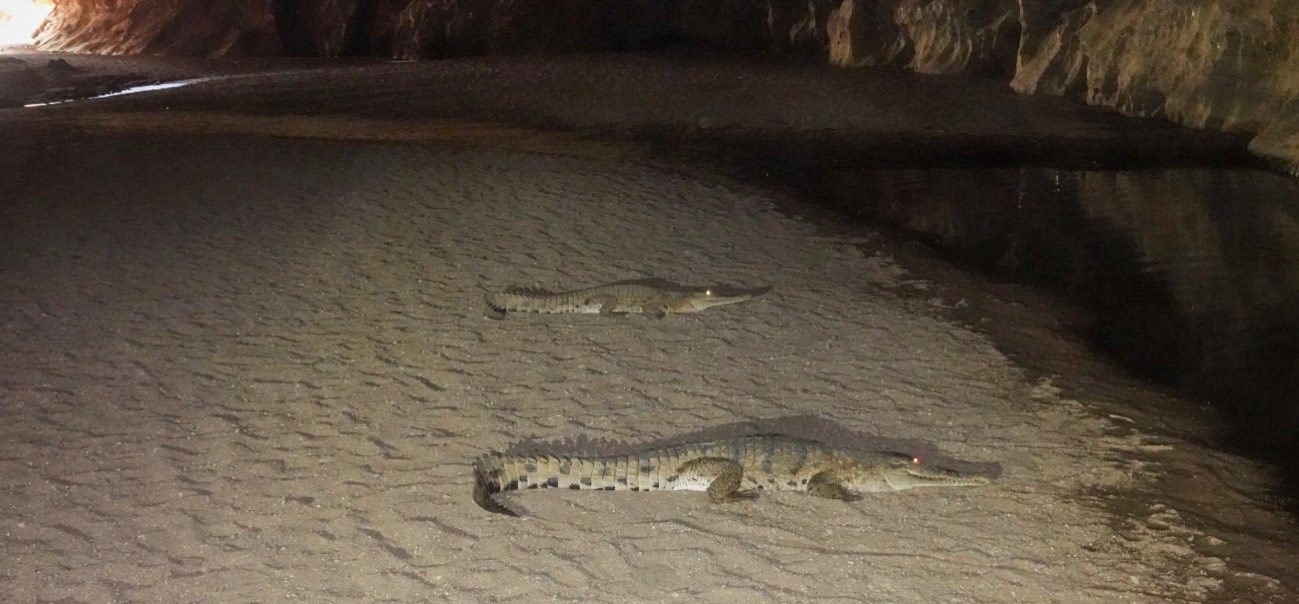 About 300 km south east of Broome is the Tunnel Creek National Park, our next destination. After travelling from Exmouth to Broome down the ‘Warlu' or the Sea Serpent Way, we found ourselves now on the Savannah Way, linking Broome with Cairns on the east coast. We spotted the first big boab trees with those fat, bottle like trunks and their skinny, upturned branches.
About 300 km south east of Broome is the Tunnel Creek National Park, our next destination. After travelling from Exmouth to Broome down the ‘Warlu' or the Sea Serpent Way, we found ourselves now on the Savannah Way, linking Broome with Cairns on the east coast. We spotted the first big boab trees with those fat, bottle like trunks and their skinny, upturned branches.
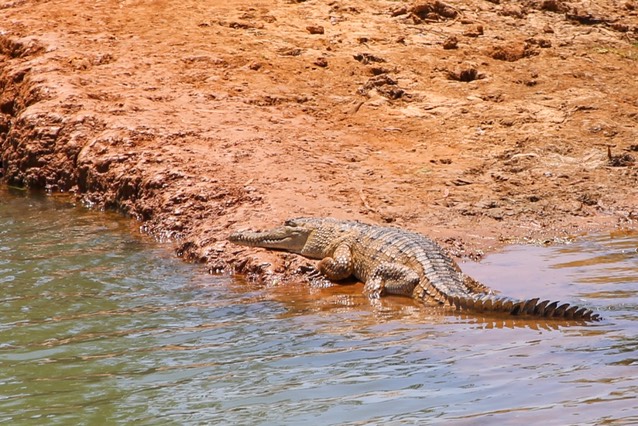 A location called “Croc Fest” incited our curiosity and we stopped at Cockatoo Bridge to see what it’s all about! Sure enough, there in the river below were quite a few small fresh water crocs happily floating about. For once there was a river having some water which was relished by birds and stock alike.
A location called “Croc Fest” incited our curiosity and we stopped at Cockatoo Bridge to see what it’s all about! Sure enough, there in the river below were quite a few small fresh water crocs happily floating about. For once there was a river having some water which was relished by birds and stock alike. 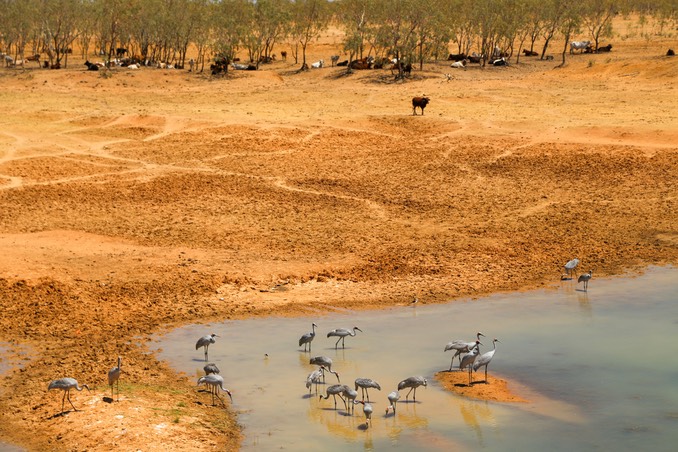 When we turned into the dirt road towards Tunnel Creek Park the sun was starting to set illuminating the rocks and scattered boabs in a golden glow. The boabs with their upwards stretched branches looked to me a little like dancers in a ball gown.
When we turned into the dirt road towards Tunnel Creek Park the sun was starting to set illuminating the rocks and scattered boabs in a golden glow. The boabs with their upwards stretched branches looked to me a little like dancers in a ball gown. 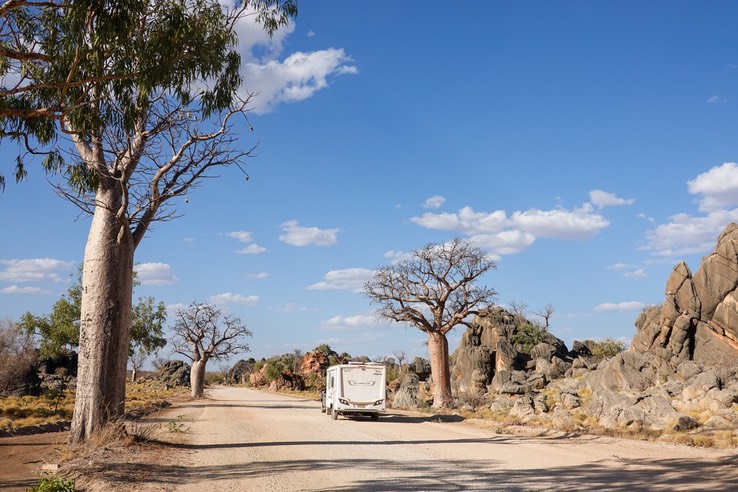 We found the old limestone quarry which we heard was a good place to stop for the night. A lovely family of five, we had already bumped into in Broome, were already set up there. They are long-term travellers and have a fantastic blog called “Trip in a Van” which Austin has been following for a while. We were relieved that we weren’t the only van in the middle of nowhere. One thing which always gets us in the outback is the amazing night sky.
We found the old limestone quarry which we heard was a good place to stop for the night. A lovely family of five, we had already bumped into in Broome, were already set up there. They are long-term travellers and have a fantastic blog called “Trip in a Van” which Austin has been following for a while. We were relieved that we weren’t the only van in the middle of nowhere. One thing which always gets us in the outback is the amazing night sky.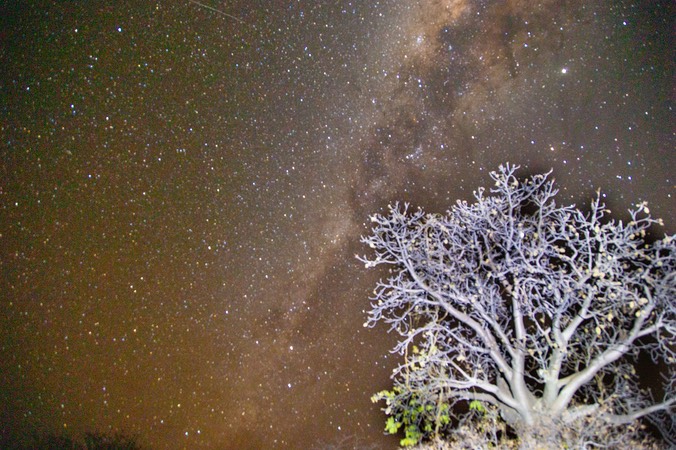
The next morning we left the caravan at the quarry and headed to Tunnel Creek, one of Australia’s oldest tunnel systems formed 350 million years ago as part of the Devonian reef. You enter the tunnel by climbing through gaps in between big limestone rocks and then down onto the muddy bank of the underground water. 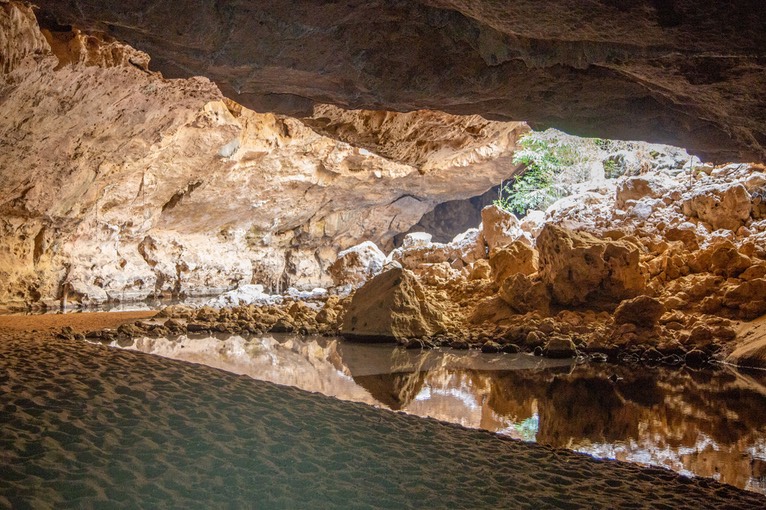 Right there, a crocodile was laying quietly and motionlessly as if guarding the entrance. We gave him some space and waded carefully through the water to the next sandbank. Overhead bats were dangling in the coral like rock. We were well equipped with head and handheld torches and reef shoes, and it wasn’t as eery as I had imagined. Although, in the next few stretches of water, one of them reaching up to my knees, there were plenty of glowing eyes from submerged crocs, with their brothers calmly stretched out on the sand banks.
Right there, a crocodile was laying quietly and motionlessly as if guarding the entrance. We gave him some space and waded carefully through the water to the next sandbank. Overhead bats were dangling in the coral like rock. We were well equipped with head and handheld torches and reef shoes, and it wasn’t as eery as I had imagined. Although, in the next few stretches of water, one of them reaching up to my knees, there were plenty of glowing eyes from submerged crocs, with their brothers calmly stretched out on the sand banks. 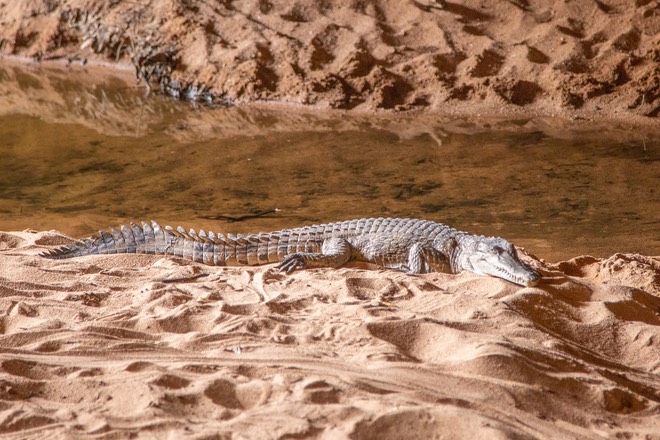 At the end of the walk, above a water pool, there are a few aboriginal paintings of men and foot prints under a rock ledge. The Tunnel Creek cave is where Aboriginal Jandamarra made his last stand and was ultimately shot. Caught between two worlds, the life on a station under the white masters and his roots with the Bunuba people, he shot two drovers and a police constable and became the leader of an armed aboriginal resistance.
At the end of the walk, above a water pool, there are a few aboriginal paintings of men and foot prints under a rock ledge. The Tunnel Creek cave is where Aboriginal Jandamarra made his last stand and was ultimately shot. Caught between two worlds, the life on a station under the white masters and his roots with the Bunuba people, he shot two drovers and a police constable and became the leader of an armed aboriginal resistance.
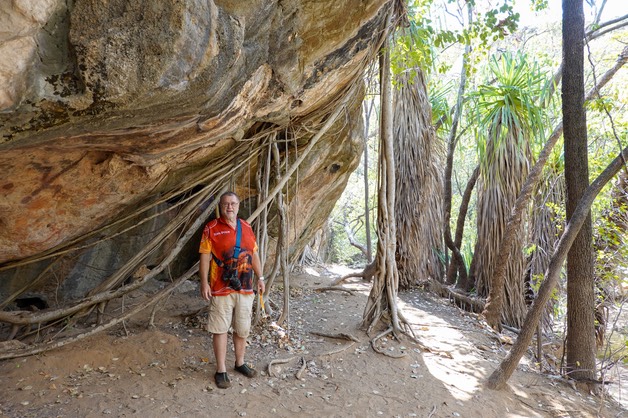 We remembered arriving at our next stop, Fitzroy Crossing, 40 years ago. The then mission consisted only of a few shacks along the river. It was my first experience of a place where no white man was to be seen.
We remembered arriving at our next stop, Fitzroy Crossing, 40 years ago. The then mission consisted only of a few shacks along the river. It was my first experience of a place where no white man was to be seen. 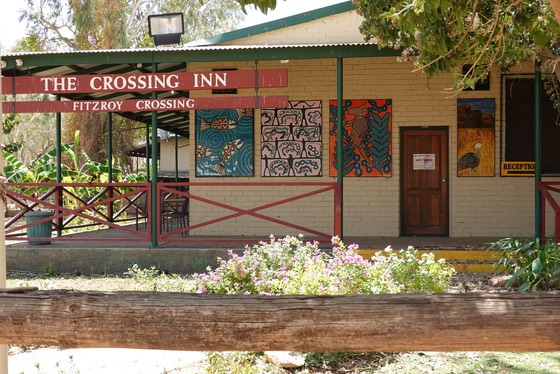 We then passed through town fairly quickly, unsure whether we were welcome or not. The population now is still about 70-80% aboriginal and it is interesting to see the indigenous ways mingle with the demands of the flow of tourism. The old stone crossing of the river is now closed and all what is left is the weir and the old Fitzroy Crossing Inn.
We then passed through town fairly quickly, unsure whether we were welcome or not. The population now is still about 70-80% aboriginal and it is interesting to see the indigenous ways mingle with the demands of the flow of tourism. The old stone crossing of the river is now closed and all what is left is the weir and the old Fitzroy Crossing Inn. 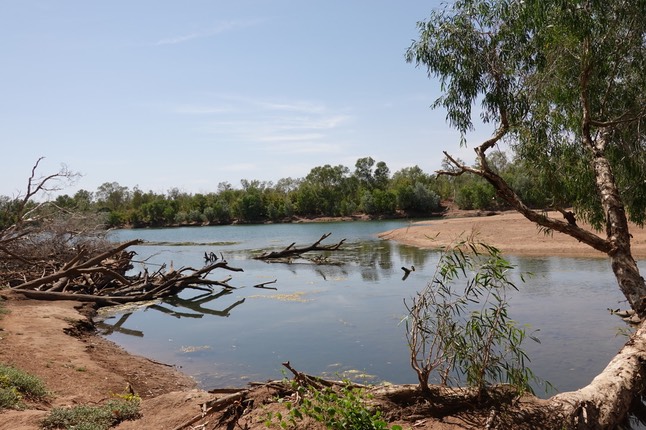 These days the town lays on higher ground, away from the flood plain. Now, at the end of the Dry, it is difficult to imagine that during the rain season the Fitzroy is a mighty waterway and can rise to 26m above sea level. With an estimated flow rate of 23,000 cubic metres per second, it could fill Sydney harbour in 6 hours. Due to these vast amounts of water it has been deemed impossible damming the river during the wet season.
These days the town lays on higher ground, away from the flood plain. Now, at the end of the Dry, it is difficult to imagine that during the rain season the Fitzroy is a mighty waterway and can rise to 26m above sea level. With an estimated flow rate of 23,000 cubic metres per second, it could fill Sydney harbour in 6 hours. Due to these vast amounts of water it has been deemed impossible damming the river during the wet season.
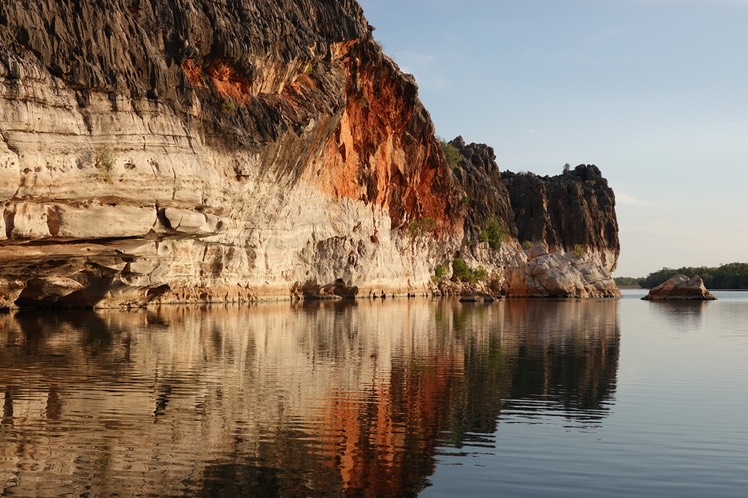 Danggu Geikie Gorge lays approximately in the middle of the 733 km long river. Here even at the end of the dry is enough water to keep the fresh water crocodiles, archer fish, barramundi, catfish, freshwater sawfish and turtles happy.
Danggu Geikie Gorge lays approximately in the middle of the 733 km long river. Here even at the end of the dry is enough water to keep the fresh water crocodiles, archer fish, barramundi, catfish, freshwater sawfish and turtles happy. 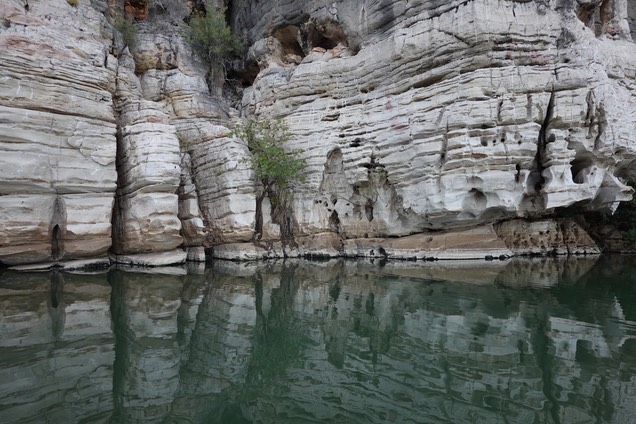 The gorge is a nice place for a boat cruise or a walk. Walks lead through the shade of Coolabah, Paperbark and Red Gum trees. The Red Gums are particularly popular with the local Bunuba people. Their branches, hollowed out by termites, are used for making didgeridoos, while the leaves are stuffed into bush turkeys and goannas for extra flavour.
The gorge is a nice place for a boat cruise or a walk. Walks lead through the shade of Coolabah, Paperbark and Red Gum trees. The Red Gums are particularly popular with the local Bunuba people. Their branches, hollowed out by termites, are used for making didgeridoos, while the leaves are stuffed into bush turkeys and goannas for extra flavour.
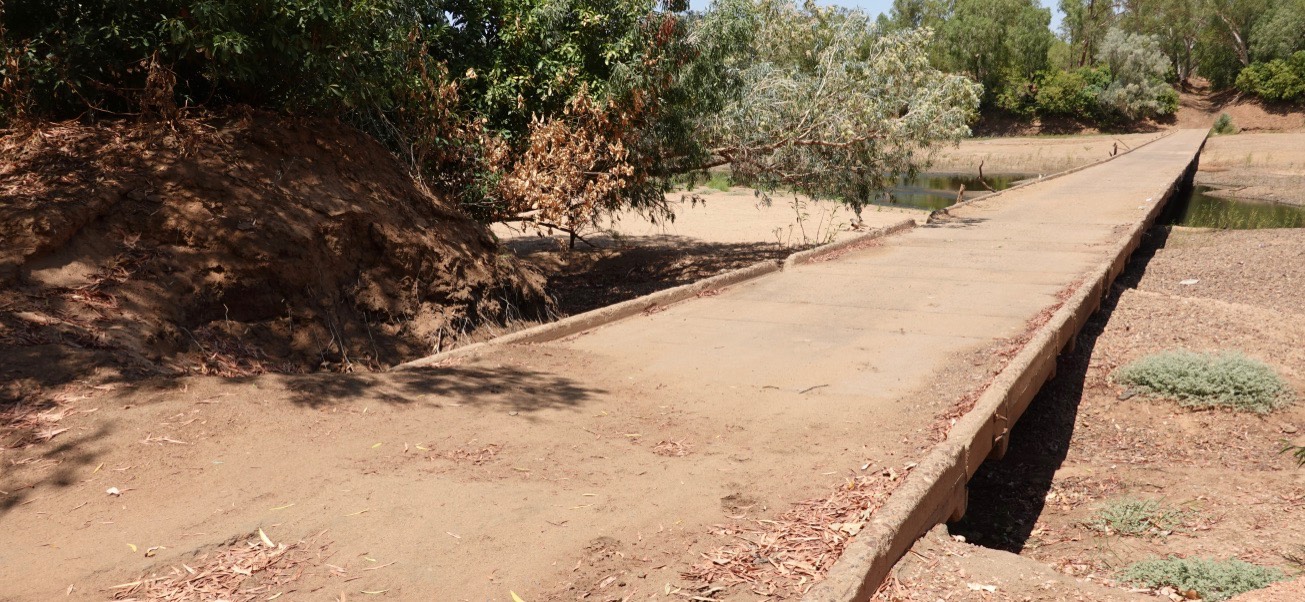
Old Fitzroy River Crossing